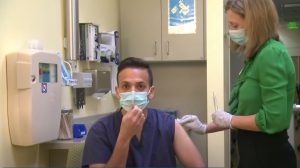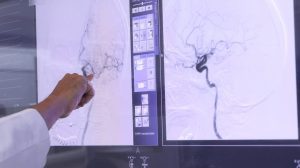NEW YORK (Reuters Health) – When shoulder dystocia occurs during childbirth and a McRoberts’ maneuver fails to alleviate the condition, subsequent maneuvers are usually successful — although some carry a higher risk of neonatal injury than others.
Those findings come from a retrospective study conducted at a university tertiary referral obstetric unit and reported in BJOG online April 12. The authors point out that information on the safety and efficacy of different maneuvers to overcome shoulder dystocia is scarce, given the emergent nature of the condition and the need for rapid action.
To investigate further, Dr. T.Y. Leung, at the Chinese University of Hong Kong, and colleagues reviewed data on 205 cases of shoulder dystocia encountered among 62,295 vaginal deliveries over a 15-year period.
In almost every instance, the first maneuver attempted was the McRoberts’ method in which the mother’s legs are hyperflexed tightly to the abdomen, to widen the pelvis and flatten the spine. This combined with suprapubic pressure was effective in 25.8% of the cases, according to the report.
In the failed cases, rotational methods or posterior arm delivery were next attempted and were equally effective, yielding a cumulative success rate of 79.0%. When this was unsuccessful, the alternative untried maneuver was applied, resulting in a final success rate of 94.6%, the researchers report.
As for injury to the infant, with the McRoberts’ maneuver only, rates of brachial plexus injury were 7.8% and rates of clavicle fracture were 3.9%, the team found.
With subsequent maneuvers, rotational methods versus posterior arm deliveries were associated with brachial plexus injury rates of 4.4% vs 21.4%, respectively; humeral fracture rates of 1.1% vs 7.1%; and clavicle fracture rates of 5.6% vs 7.1%.
In the four cases in which lateral traction was used, the dystocia was alleviated but brachial plexus injury occurred in three instances and clavicle fracture in one, the researchers note. This approach “must be avoided,” they advise.
“Our results indicated that most cases of shoulder dystocia can be resolved by the application of three manoeuvres within 4 minutes,” Dr. Leung and colleagues conclude.
They add, “As our study is not a randomised trial to compare different manoeuvres, further studies are necessary to confirm our findings. In the meantime, our findings could provide helpful information to frontline clinicians in their choice of the optimal option under the circumstance.”
Reference:
Comparison of perinatal outcomes of shoulder dystocia alleviated by different type and sequence of manoeuvres: a retrospective review
BJOG 2011.




